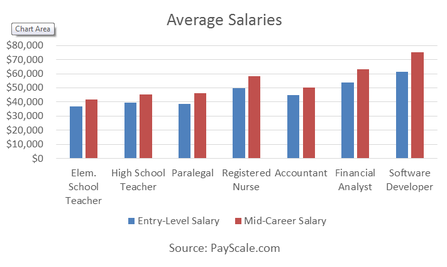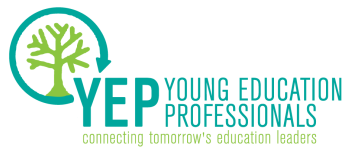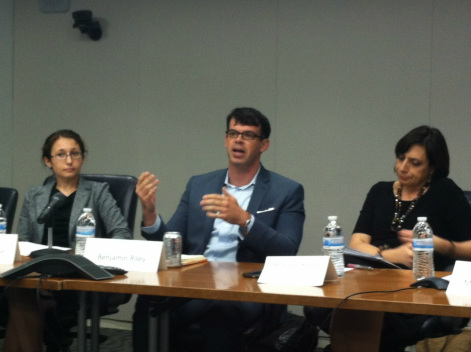
One element of teaching that is behind the times is the pay scale. An overwhelming majority of districts – 89 percent – use a “step and ladder” payment system. Under this system, teachers do not receive raises or promotions based on their performance in the classroom. Instead, wages increase according to years of experience (the steps), and there is a pay bump for receiving additional higher education degrees (the ladder). This means that in nearly every school in the United States, teachers aren’t being paid for great teaching. Rather, they are being paid for paper credentials and time on the job – neither of which is a reliable indicator of success.
This system helps exacerbate what’s known as the “widget effect,” where teachers are simply viewed as interchangeable parts. This leads to other problems, like low-quality performance reviews and professional development opportunities, and it even bleeds into federal policy. For example, under the Elementary and Secondary Education Act, states and districts must provide “comparable” services to low-income and higher-income schools in order to tap into Title I funding. However, when it comes to teachers, this comparability is achieved if schools use the same teacher salary schedule and have the same proportion of teachers – without accounting for whether or not those teachers are actually good at their job.
The teaching profession’s outdated salary model is one factor that drives away millennials. According to polling data on job preferences from the Third Way report, “91 percent of college students with a 3.3 GPA or higher said ‘opportunities to advance within the profession’ were important,” and “89 percent said ‘salary for those established in the career’ was important.” A career in teaching clearly lacks these high-priority benefits to which modern job seekers are drawn.
Teachers are essentially forced to leave the classroom if they want to advance. Some teachers opt to become school administrators in order to achieve greater levels of responsibility and autonomy – and a higher salary. However, making this change means that skilled veteran teachers no longer serve as instructional leaders. As a result, additional training is required for the novice teachers who replace them, costing up to $2.2 billion each year, according to the report.
In order to change this, schools must implement sensible career pathways that develop teacher-leaders and give them opportunities to maximize their impact on student learning. Public Impact – another organization that advocates for improving the teaching profession – has outlined principles for creating such an “opportunity culture.” They recommend using innovative approaches like team teaching, remote teaching, and digital learning to expand the number of students that skilled teachers are able to reach. When teachers expand their reach, their pay increases accordingly. In the education world, this might sound like a radical shift, but it’s really just bringing teaching in line with other professions: the best employees earn more responsibility and higher salaries.
The Third Way report highlights one example of such a system being used right here in the District’s public schools. The Leadership Initiative for Teachers, or LIFT, is a career ladder with multiple stages that “provides high-performing teachers with opportunities to advance within the teaching profession through additional responsibilities, increased recognition, and better pay.” It works in conjunction with IMPACTplus, a compensation system developed by DC’s public schools and the local teachers’ union. Teachers advance to different stages of the LIFT ladder by consistently earning effective and highly effective ratings, and as they progress, they receive substantial increases in their base salary. They can also earn additional pay for factors like teaching high-need subjects or working in high-poverty schools. Under this system, a skilled teacher can earn over $125,000 per year. Teachers who advance through the LIFT ladder also become eligible for a variety of in-classroom leadership roles, such as consulting teacher, instructional specialist, and master educator.
To modernize the teaching profession, systems like LIFT and IMPACTplus need to be supported and expanded. Since 2006, the Department of Education has tried to encourage this through a competitive grant known as the Teacher Incentive Fund, or TIF, which rewards districts and states that use compensation structures based on classroom performance. In fact, DCPS received a $62 million TIF grant in 2012.
Sadly, however, funding for TIF would be significantly reduced by the FY 2016 spending bill currently under consideration in the Senate. And the House’s current spending proposal would eliminate the Fund altogether. Programs like TIF need continued support if we want to spur on improvements in the teaching profession and attract talented candidates. With three million teachers expected to enter the profession over the next decade, America’s classrooms can’t afford to continue business as usual.
Phillip Burgoyne-Allen is a legislative assistant at an education law firm. Reach him via email or Twitter.




 RSS Feed
RSS Feed